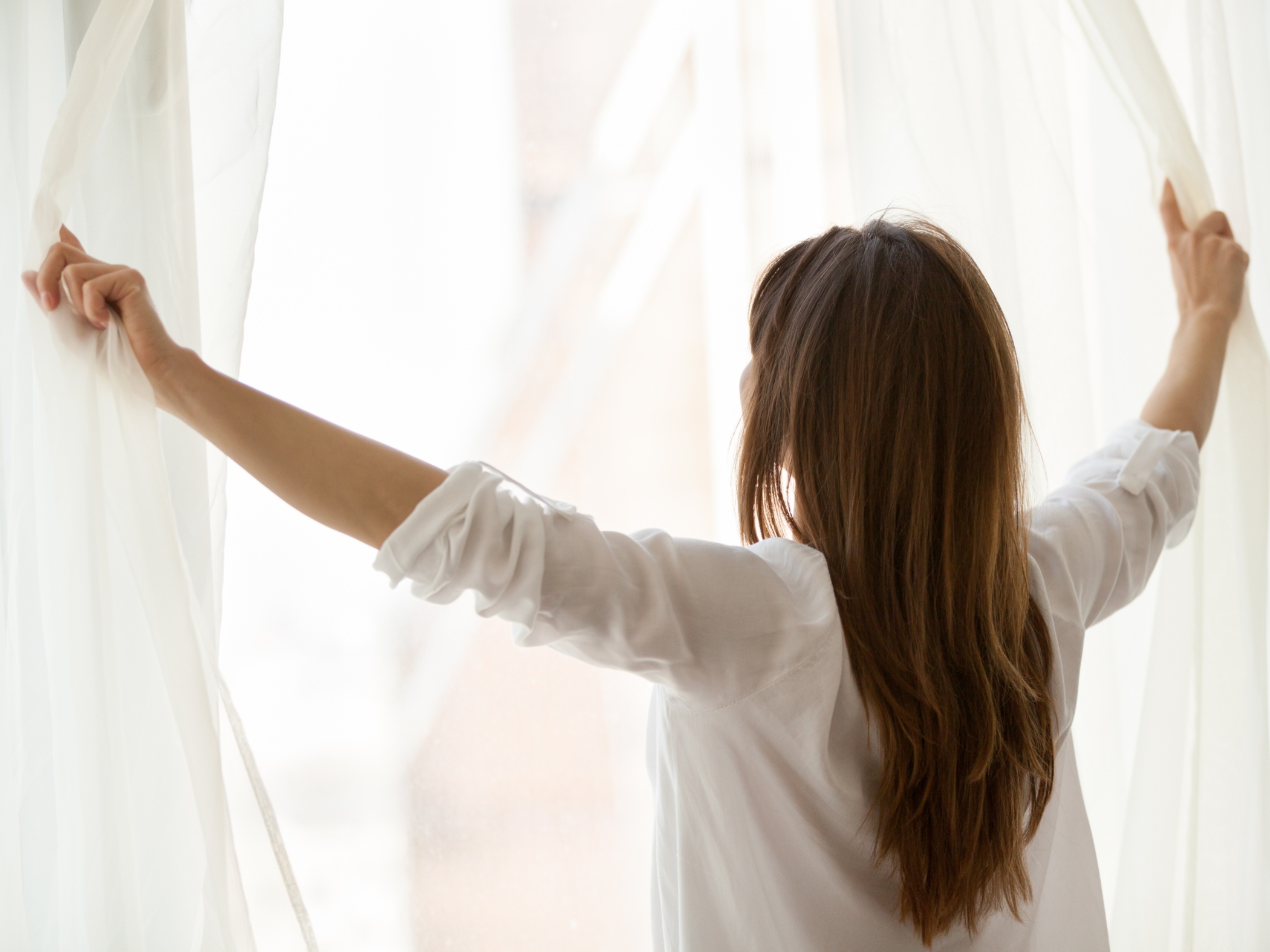Beat the Heat with Passive Cooling

When the summer heats up, staying cool can be a challenge. Although air conditioning provides relief, these units use a significant amount of energy. Passive cooling — where heat is blocked or removed — is an environmentally friendly alternative. New homes can be designed for passive cooling, but you can use passive cooling techniques in your existing home to stay comfortable and reduce your summer energy costs.
Close the curtain on heat gain
Close window treatments — such as shades, blinds and curtains — on hot, sunny summer afternoons to reduce solar heat gain and the need for air conditioning.
Exterior shading devices — awnings, louvers and shutters — block direct sunlight, which helps to reduce solar heat gain. Awnings installed on windows that have a southern exposure can reduce solar heat gain as much as 65%.
Plant the seeds for shade
Leafy trees planted on the south and west sides of your home will provide cooling shade in summer and reduce heat gain through your roof and windows. An 8-foot tree planted near your home will provide shade for windows during the first year. Depending on the species and the roof, a tree will provide roof shading within five to 10 years.
For more information, see Landscaping from the U.S. Department of Energy and the National Tree Benefit Calculator.
You can also download this free booklet, "Tree Tips: A Planning Guide", for information about types of trees, proper tree care, recommended planting distance from power lines and more. Or, checkout SWEPCO’s YouTube Channel for a series of videos on tree care from Shreveport Green.
Make cool summer savings a breeze
A cool breeze feels great on a hot day. It also helps to force warm air out of your home. Open windows during the coolest part of the day or night and close them during the hot afternoon.
Ventilated attics reduce accumulated heat, and are up to 30°F cooler than unventilated attics. Louvers and roof vents, when properly sized and placed, help prevent heat buildup and moisture in your attic.
Reflect on heat buildup
Although they require a bigger investment, reflective roofs and windows can go a long way toward making your home more comfortable and efficient.
Your roof gets hot in the summer and much of that heat filters into your home. Reflective roof coatings block the sun's ultraviolet rays, reducing surface temperatures by as much as 80°F.
Much of the unwanted heat that builds up in your home on hot summer days enters through the windows. Reflective window films deflect up to 97% of infrared heat, while helping to prevent the fading of furniture, draperies and carpeting.
Although passive cooling methods can provide some cost-effective relief from the heat, most homes require supplemental cooling. Operate ceiling fans in occupied rooms to make it feel cooler, reducing the need for air conditioning.
With passive cooling, you can beat the heat this summer while enjoying the extra comfort of lower energy bills.
Return to newsletter